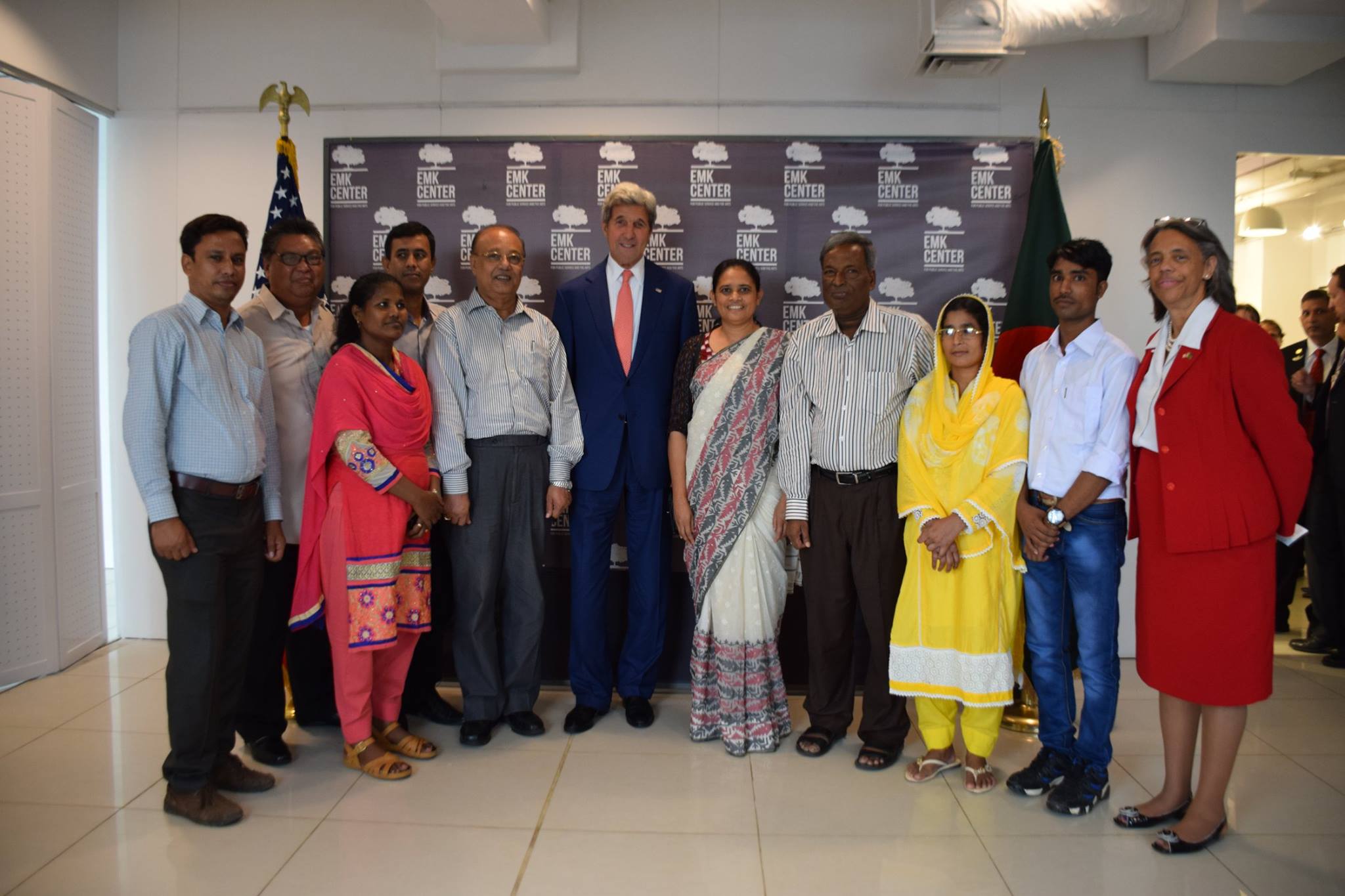
Sep 19, 2016
U.S. Secretary of State John Kerry met with leaders of Bangladesh garment unions recently in Dhaka, where he emphasized workers’ ability to freely form unions as key to workplace safety.
“Enhancing worker safety has to be paired with strengthening workers’ rights,” he told a group of 60 garment workers and allies.
“The fact is garment factories across Bangladesh actually could benefit enormously from empowering laborers, allowing them to form labor unions, affording them full collective bargaining rights, because no one should ever be compelled to work in hazardous or exploitative conditions. It’s really that simple.”
Worker Prosperity Possible with Worker Rights
At the event, which took place at the Edward M. Kennedy center in Dhaka, the capital, Kerry drew parallels between the efforts of Bangladesh garment union leaders to empower workers and Sen. Edward Kennedy’s strong support for working men and women.
“Bangladesh cannot truly meet the aspirations of its people and share prosperity if its workers are not safe and their rights are not ensured.
Kerry noted how “the $28 billion garment industry has played a uniquely important role” in the rise of Bangladesh’s economy. But he cautioned, “Growth on its own—growth just for its own sake—is not our only goal. You can grow and grow and grow and grow, but you can be growing with the wrong values, you can be growing with the wrong outcomes, you can be growing with people not gaining in their rights or in their income or in their ability to get an education.”
Kerry met with six garment worker union federation leaders: Babul Akter from the Bangladesh Garment and Industrial Workers Federation (BGIWF); Amirul Amin from the National Garment Workers Federation (NGWF); Nazma Akter, Sommilito Garments Sramik Federation (SGSF); Sritee Akter, Garment Workers Solidarity Federation (GWSF); Roy Ramesh, United Federation of Garment Workers (UFGW); and Raju from the Bangladesh Independent Garment Union Federation (BIGUF). Two factory union leaders affiliated with BGIWF, Munna and Rina, also attended.
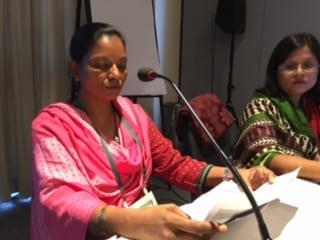
Sep 9, 2016
Bangladesh women garment workers make 20 percent less than their male counterparts and are often physically and sexually harassed. Yet women comprise 80 percent of the country’s 4 million garment workers, and the garment industry accounts for more than 80 percent of Bangladesh’s export earnings, according to Solidarity Center Senior Program Officer Lily Gomes, speaking on a panel yesterday at the 2016 Association for Women’s Rights in Development (AWID) forum in Bahia, Brazil.
The panel, the first of several Solidarity Center-sponsored sessions at the September 8–11 AWID forum, focused on the struggle for gender equality by Bangladesh women garment workers and migrant workers.
When women workers form unions, they improve their working conditions. But it is also necessary for women to shift the gender dynamics, says Gomes. Women now make up more than 61 percent of union leadership in the factory-level unions that have formed in recent years, and women also are participating in Solidarity Center gender trainings, which focus on women’s economic empowerment. Following recent trainings, for example, many women garment workers opened their first bank accounts, and are increasingly becoming more active in their unions.
Bangladesh women also are among the many workers migrating to other countries for jobs, and panelist Lily Jahan, chairwoman of Bangladesh Obivashi Mohila Sramik Association (BOMSA), discussed the group’s training and support of workers, many of them women, who travel to other countries for work.
BOMSA, a migrant worker rights organization, provides workers with pre-departure training about how to protect their rights at work in the countries where they will work, she says, and also provides child care and access to school for the workers’ children.
Bangladesh women workers also are seeking allies in their struggle across the global feminist movement, says Gomes, and panelists sought ideas and support from participants, who included a range of women’s rights activists.
Says Gomes: “We will be connected. We are women. We will make the world hear our voice.”
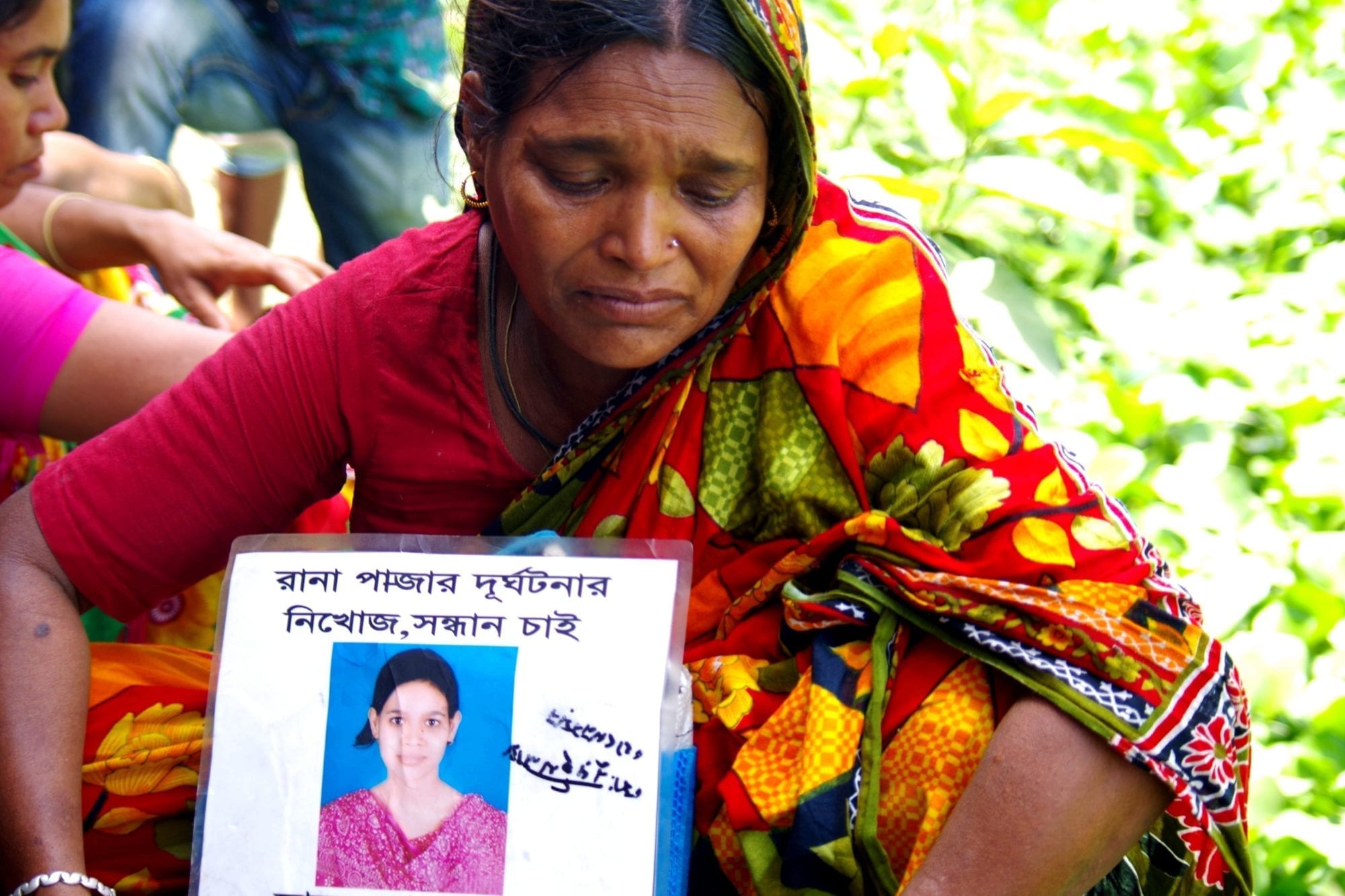
Jul 20, 2016
Bangladesh courts this week charged 38 people with murder for their role in the collapse of Rana Plaza factory building that killed more than 1,130 garment workers in April 2013.
Solidarity Center Asia Region Director Tim Ryan calls the move “a much-delayed step in the right direction,” but adds:
“Over the past three years, the Bangladesh government has approved fewer and fewer union registration applications. Through their unions, workers are able to speak out freely about safety and health concerns at their worksites and prevent horrible tragedies like Rana Plaza. Limiting workers from forming unions puts workers’ safety at risk.”
In 2015, the Bangladesh government rejected 73 percent of union registration applications, according to data compiled by Solidarity Center staff in Dhaka, the capital.
Arim ul-Haq Amin, president of the National Garment Workers Federation, told Australia-based ABC news that he is disappointed it took so long for perpetrators to be held accountable. He called on multinational companies and garment brands to take responsibility for worker safety.
Some brands stepped up after international outrage over the 2013 Rana Plaza and the 2012 Tazreen Fashions Ltd., factory fire prompted creation of the Bangladesh Fire and Building Safety Accord, a legally binding agreement in which nearly 200 corporate clothing brands and trade unions are supporting garment factory inspections and repairs to ensure safe workplaces. Dozens of garment factories have been closed for safety violations and pressing safety issues addressed.
Many of the 2,000 survivors of the Rana Plaza, and families of those who perished, say they received little or no compensation following the building collapse. Many survivors suffered injuries so severe they are unable to work, and without sufficient compensation, are unable to support themselves and their families.
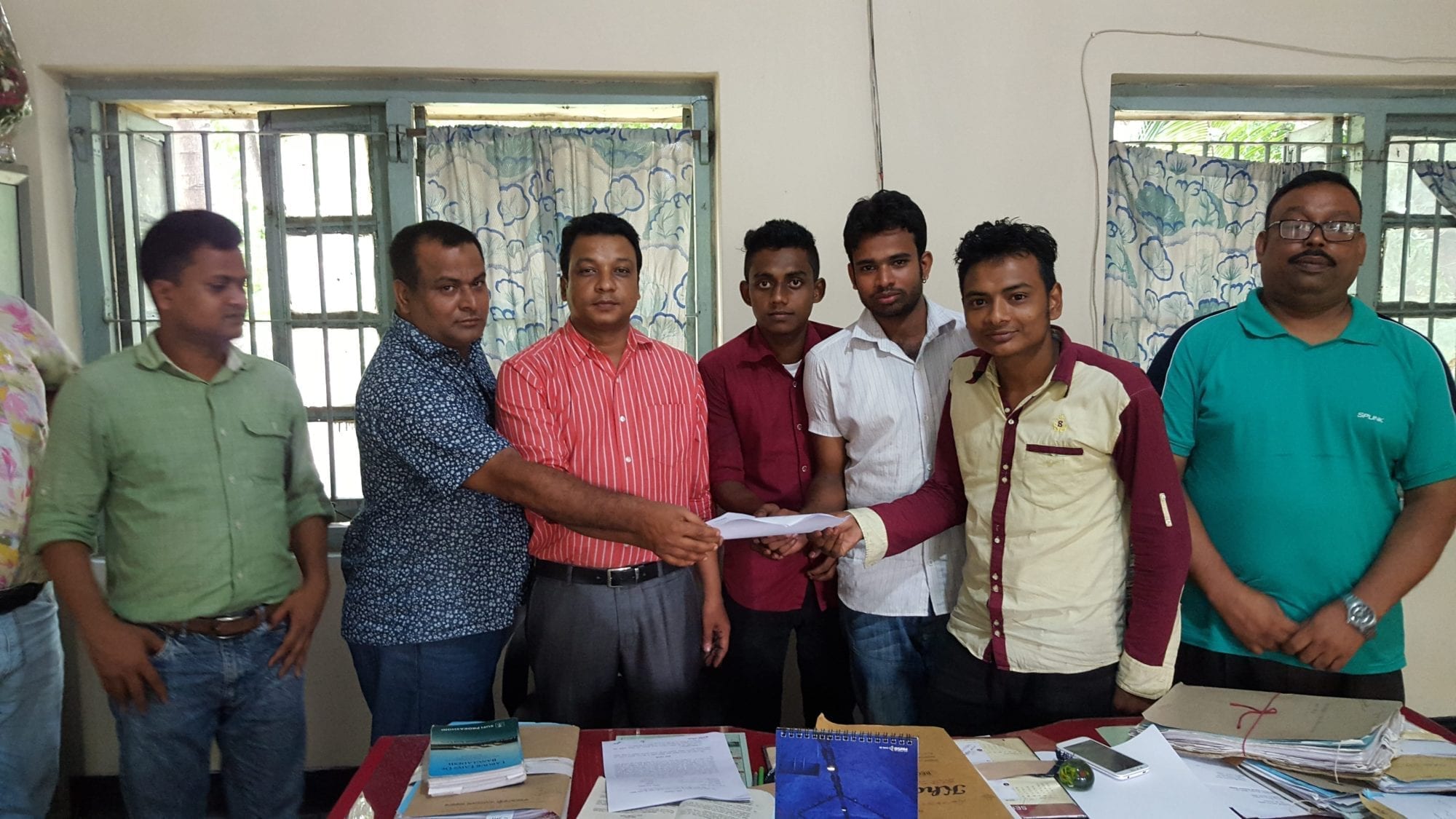
Jun 15, 2016
Laundry workers affiliated with the Bangladesh Independent Garment Workers Union Federation (BIGUF) at the Jeans Express Ltd. Washing Division factory in Chittagong, Bangladesh, successfully negotiated a collective bargaining agreement following a two-day strike in May.
As a result of the strike, the 70 laundry workers won a 6 percent wage increase, improvements in leave, access to purified water, a union office, a prayer space and an area where workers can eat meals. The union and management also committed to a dispute resolution process.
Law Makes Legal Strikes Nearly Impossible
The strike action—which, as a legal strike, is extremely rare due to onerous legal requirements—prompted management to bargain a contract with the union.
The union had sought to begin the collective bargaining process in December 2015, but management refused to meet with the union. As per Bangladesh labor law, the union filed complaints with the government, which made several attempts at conciliation without success. On May 2, all but one union member who voted in a secret ballot election overseen by the government’s Joint Director of Labor (JDL) voted in favor of a strike.
“This has been a great success following a six-month-long struggle,” says BIGUF Organizing Secretary Chandon Kumar Dey. “Now we must now ensure implementation of the agreement and help the union build a constructive relationship with the management.”
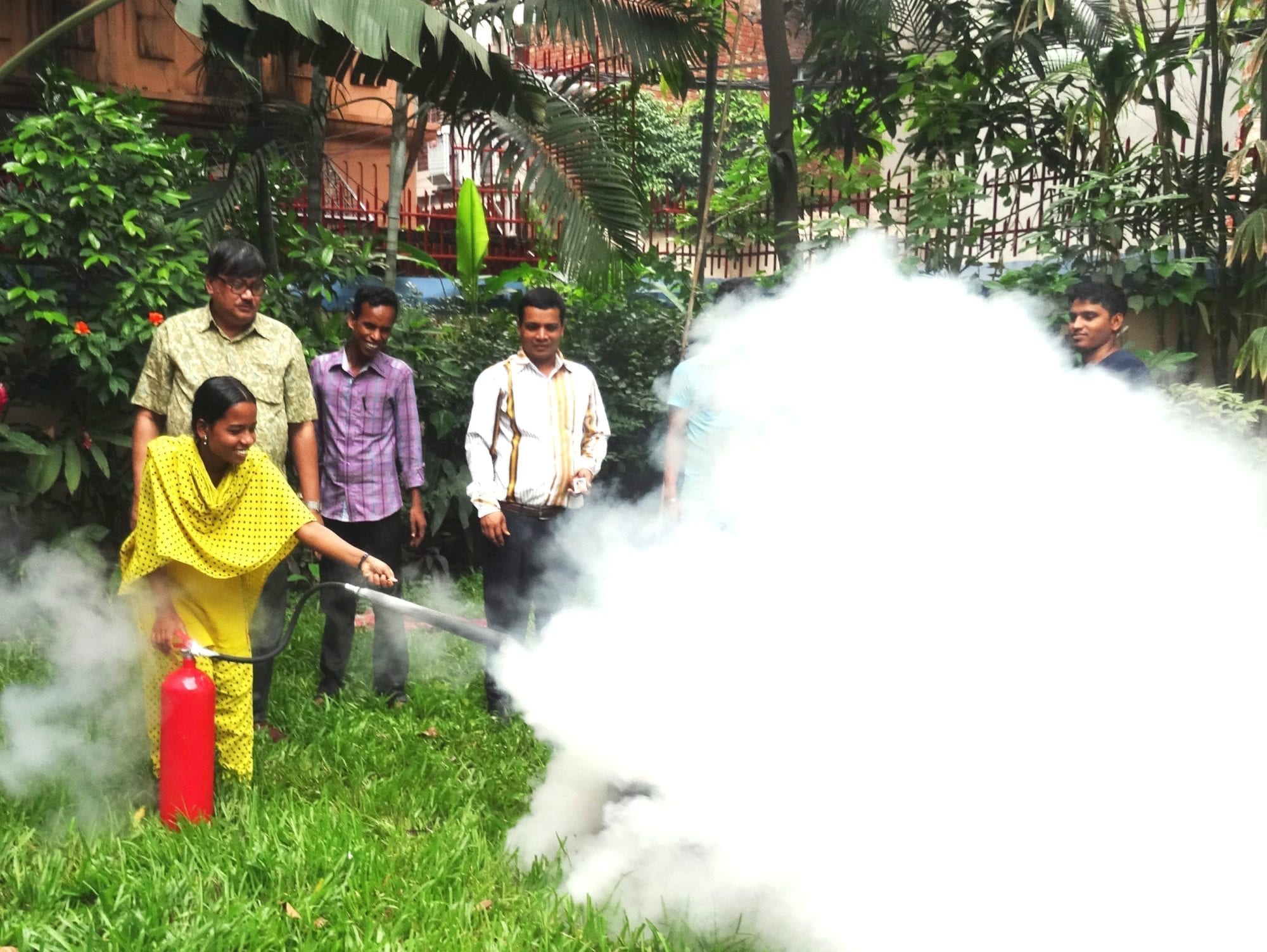
Apr 21, 2016
On April 24, 2013, the Rana Plaza garment factory building in Bangladesh collapsed, trapping thousands of workers and ultimately killing more than 1,130 garment workers in a preventable workplace disaster.
The tragedy came five months after a fire tore through Tazreen Fashions Ltd., killing more than 100 Bangladesh garment workers.
“Rana Plaza was a clarion call for deep, fundamental change in Bangladesh’s apparel sector.”
-U.S. AMBASSADOR TO BANGLADESH DAN MOZENA
The day before Rana Plaza collapsed, a structural engineer reported cracks in the building so dangerous, he recommended it be closed. Workers were afraid, but factory managers said if they did not show up the next day, their pay would be cut or they would be suspended.
NO ONE SHOULD HAVE TO GO TO WORK AFRAID
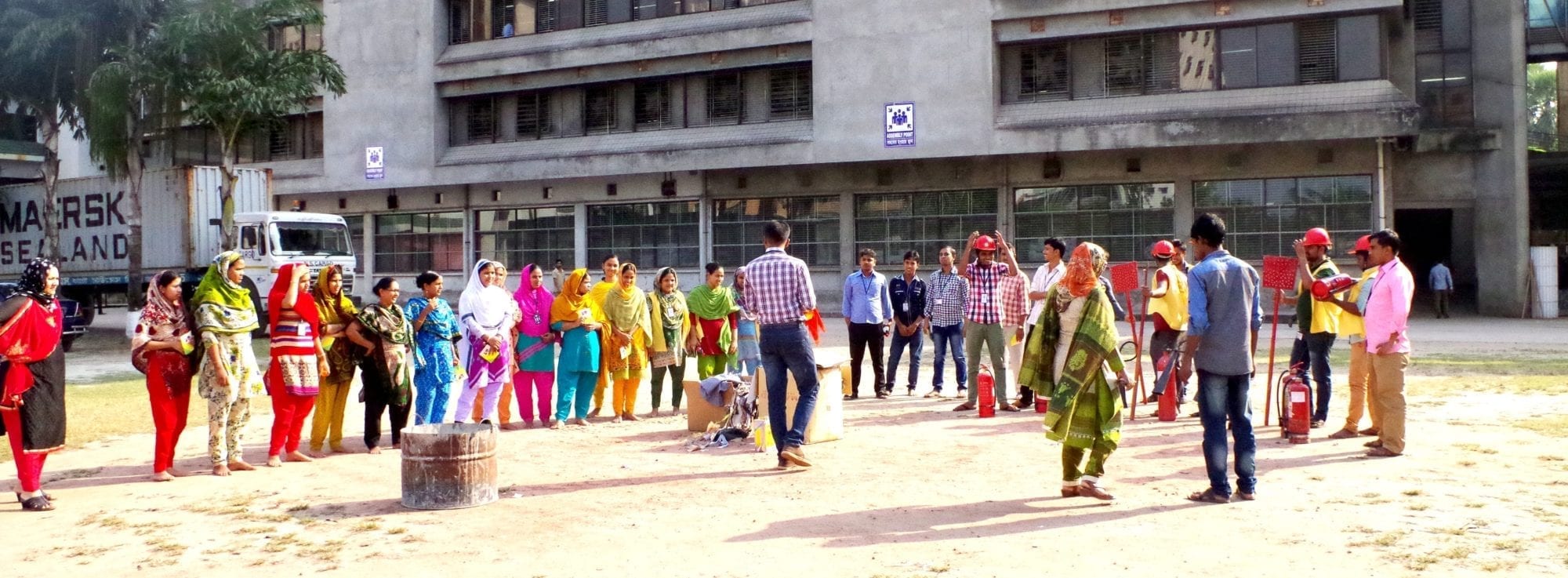
Photo credit: Solidarity Center
Three years later, 176 union leaders have completed the Solidarity Center’s fire safety certification training program, putting 62 Bangladesh garment factories on a path towards safer working conditions. The Solidarity Center has held nine 10-week intensive training courses on fire and building safety.
Through the Fire and Building Safety course, garment workers, union leaders and factory management learn about fire and building safety codes and preventative measures, and practice steps to take in an emergency. Garment workers take part in hands-on training with fire extinguishers to gain experience and confidence.

Credit: Solidarity Center
Tahsin Khan, a mechanic at Aliza Fashion Limited, had taken a fire safety training years ago, but the course did not include hands-on practice and he says he was never confident enough to apply what he learned. The Solidarity Center course encouraged him and provided the practice he needs to potentially save lives at his workplace.
“We are now confident after the training that we can help factory management and other workers if there is any incident of fire in our factory.”
-MOSAMMAT DOLI, UNION LEADER (BGIWF)

Credit: Solidarity Center
The Solidarity Center also coaches workers on how to approach factory managers about safety concerns and how to train co-workers in proper fire prevention methods. Bilkish Begun says workers at her garment factory could not discuss implementing safety measures with their employer until they formed a union because they feared they would be fired. Now, Bilkish and other women working in her factory can take measures together to ensure their safety, like organizing a fire safety training with the Solidarity Center through their union.
“I used to be afraid of fire erupting in my factory, but after attending training, I feel that if we work together, we can reduce the risk of fire in our factory.”
-BILKISH BEGUM, SOMMILITO GARMENTS SRAMIK FEDERATION
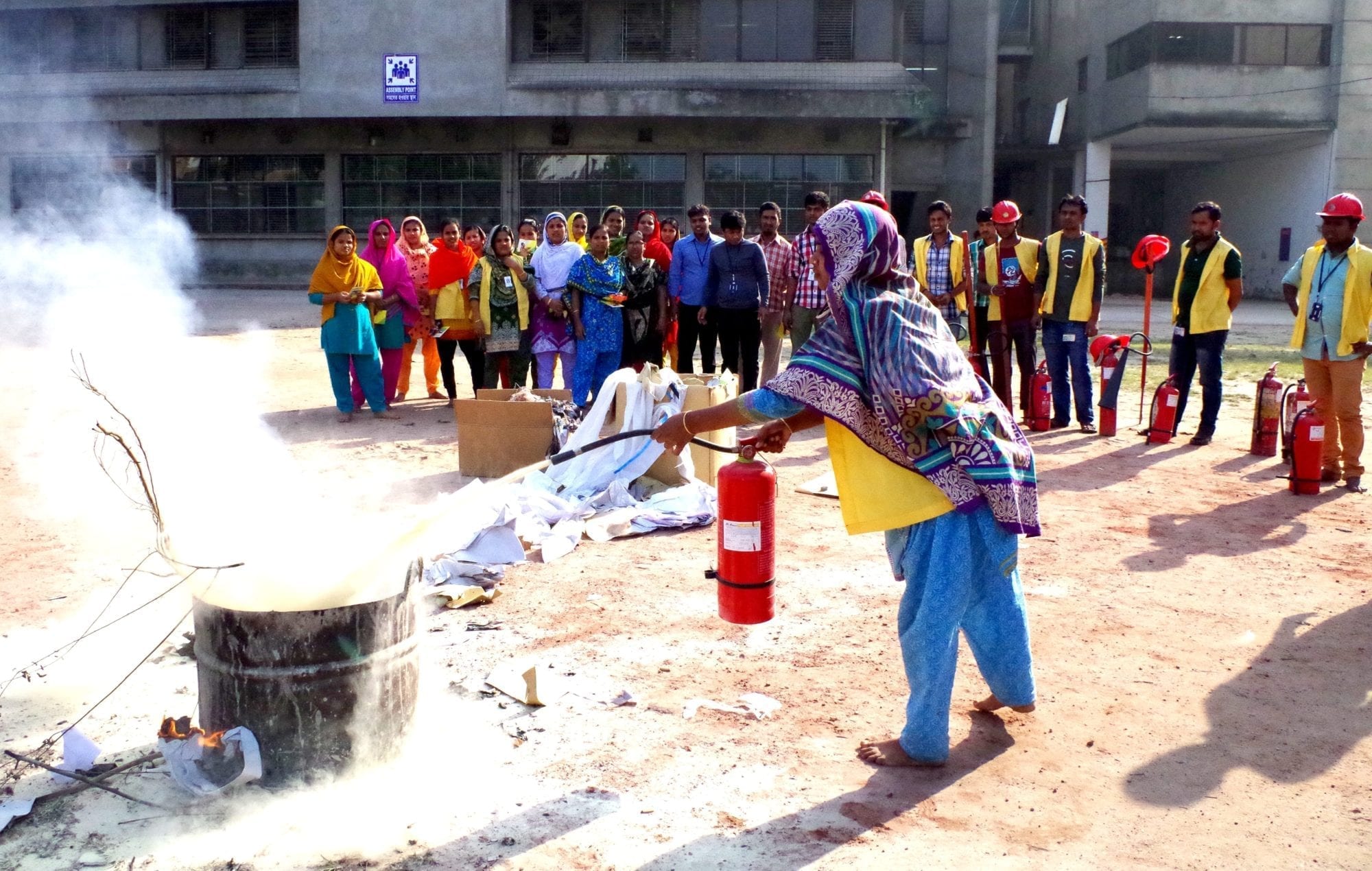
Credit: Solidarity Center

Credit: Solidarity Center
WOMEN LEADERS: CERTIFIED
82 FEMALE UNION LEADERS | 20 FEMALE FEDERATION ORGANIZERS
Training women in fire and building safety is imperative because they make up approximately 80 percent of the workforce in Bangladesh’s garment sector. As women are taking on more active roles in their unions, the Solidarity Center is empowering female garment workers to share their knowledge and skills to ensure safe work environments for everyone. The female garment workers certified through the Solidarity Center Fire and Building Safety Training have gone on to train hundreds more.
344 WOMEN HAVE ATTENDED TRAINING WITH THEIR FACTORIES.
When Shilpi Akter attended training in her capacity as Women Affairs Secretary of Reliance Denim Industries Ltd., she learned that a cluttered or crowded production floor can obstruct passage in an emergency. Noticing that her factory’s production floor was blocked by cartons, she raised this issue to management, which fixed the problem after hearing from her.
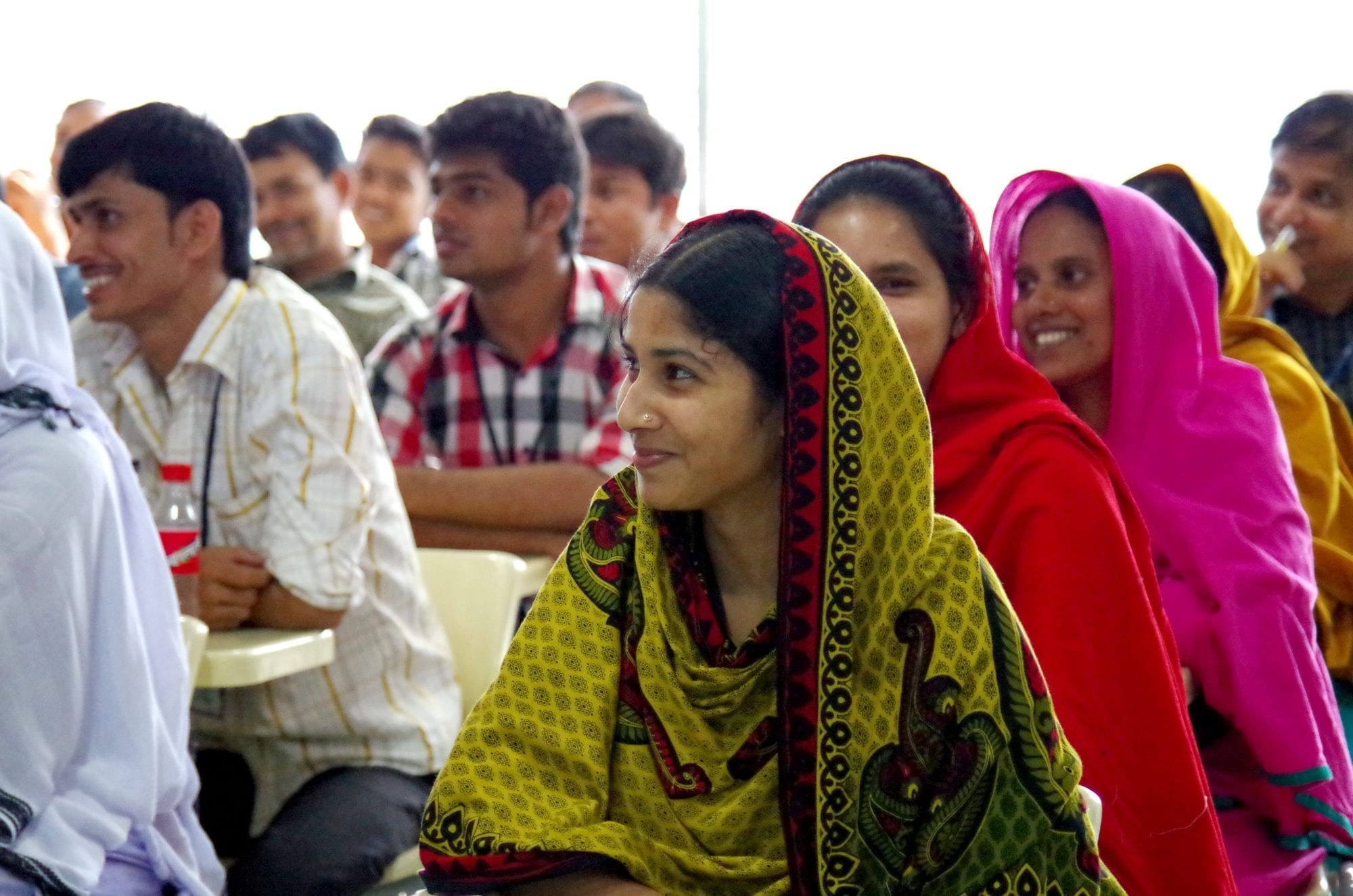
Credit: Solidarity Center
TRAIN WORKERS, SAVE LIVES
By putting what they learned through the training course into practice, participants have already diverted potential disasters in their workplaces. After attending a fire safety training last August, Monir Hassain says he is now able to identify risks and is working to minimize those risks for workers.
EXCLUDING THE TAZREEN FACTORY FIRE, 34 WORKERS HAVE DIED AND MORE THAN 1,023 HAVE BEEN INJURED IN GARMENT FACTORY FIRES SINCE 2012, ACCORDING TO DATA COMPILED BY THE SOLIDARITY CENTER IN BANGLADESH.
When an electrical short-circuit caused a generator to explode at one garment factory, Osman, president of the factory union and Popi Akter, another union leader, quickly addressed the fire and calmed panicked workers using the skills they learned through the Solidarity Center fire training. They also worked with factory management to correct other safety issues, like blocked aisles and stairwells cramped with flammable material.
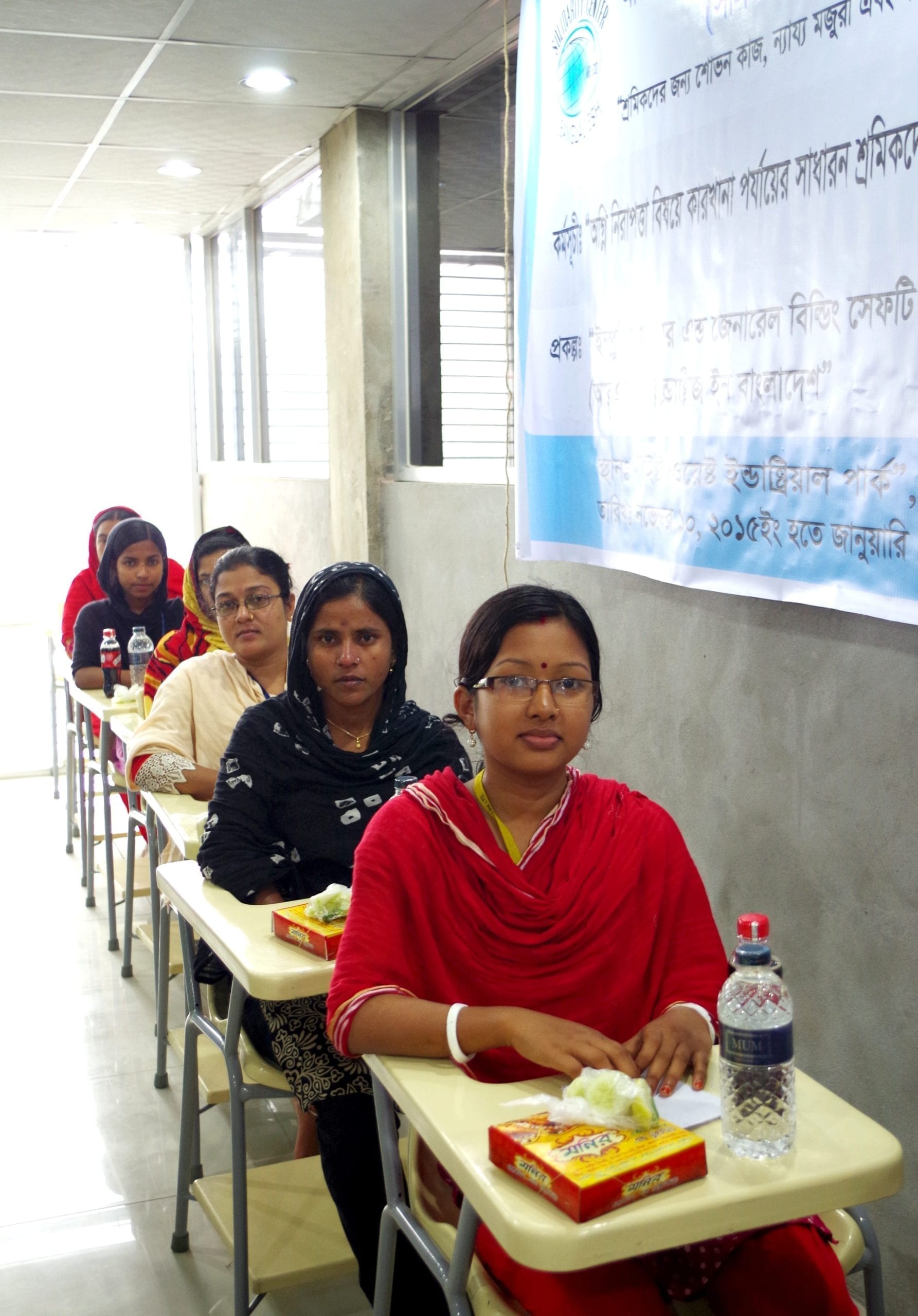
Credit: Solidarity Center
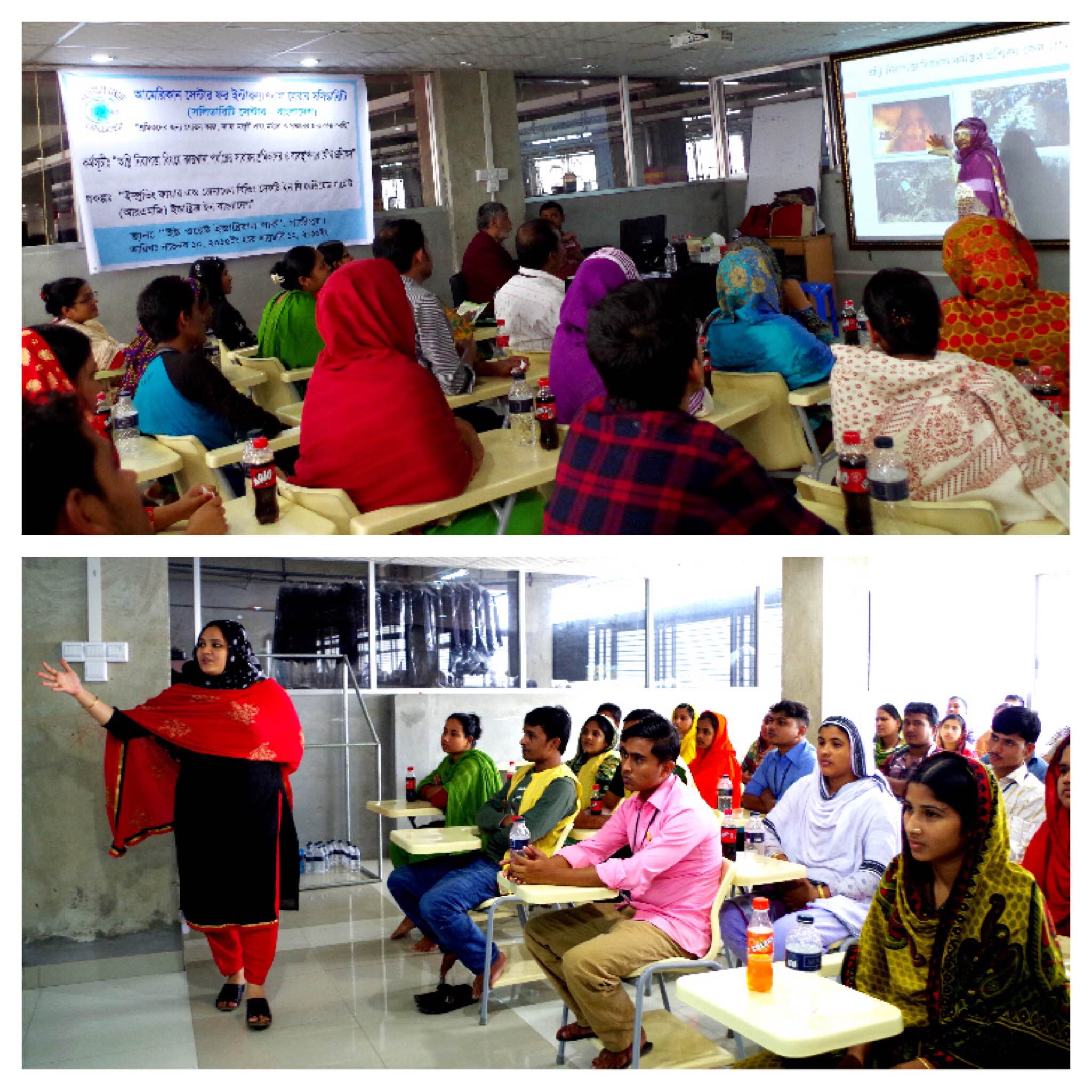
Credit: Solidarity Center
“People who worked at Tazreen and Rana Plaza had no training and had no union. This training is about making sure those things never happen again.”
-SAIFUL, UNION LEADER, RADISSON APPARELS
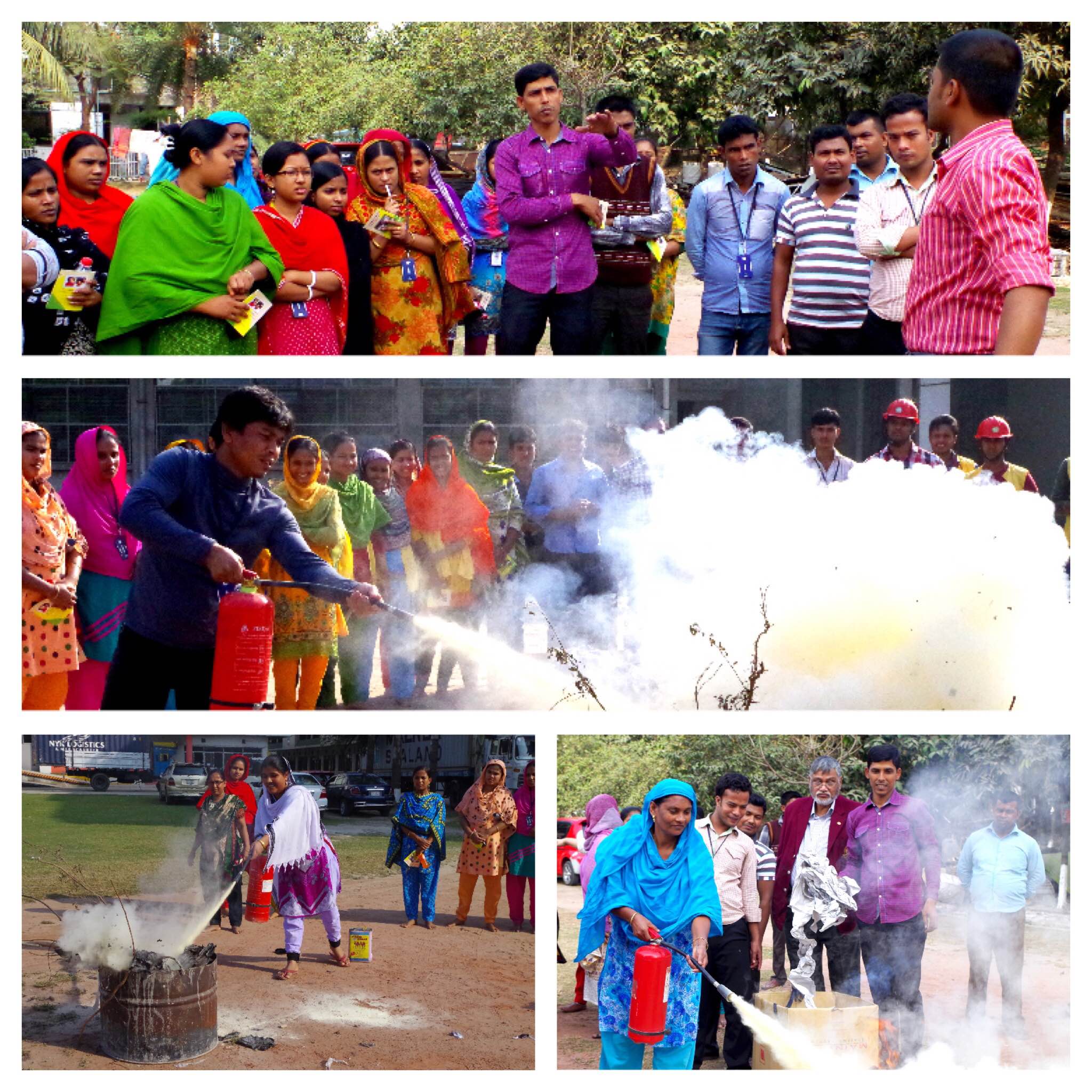
Credit: Solidarity Center
855 WORKERS TRAINED
“We need to know what to do and give workers the confidence to be leaders in their factories.”
-URMI, SOLIDARITY CENTER FIRE SAFETY TRAINING CERTIFIED
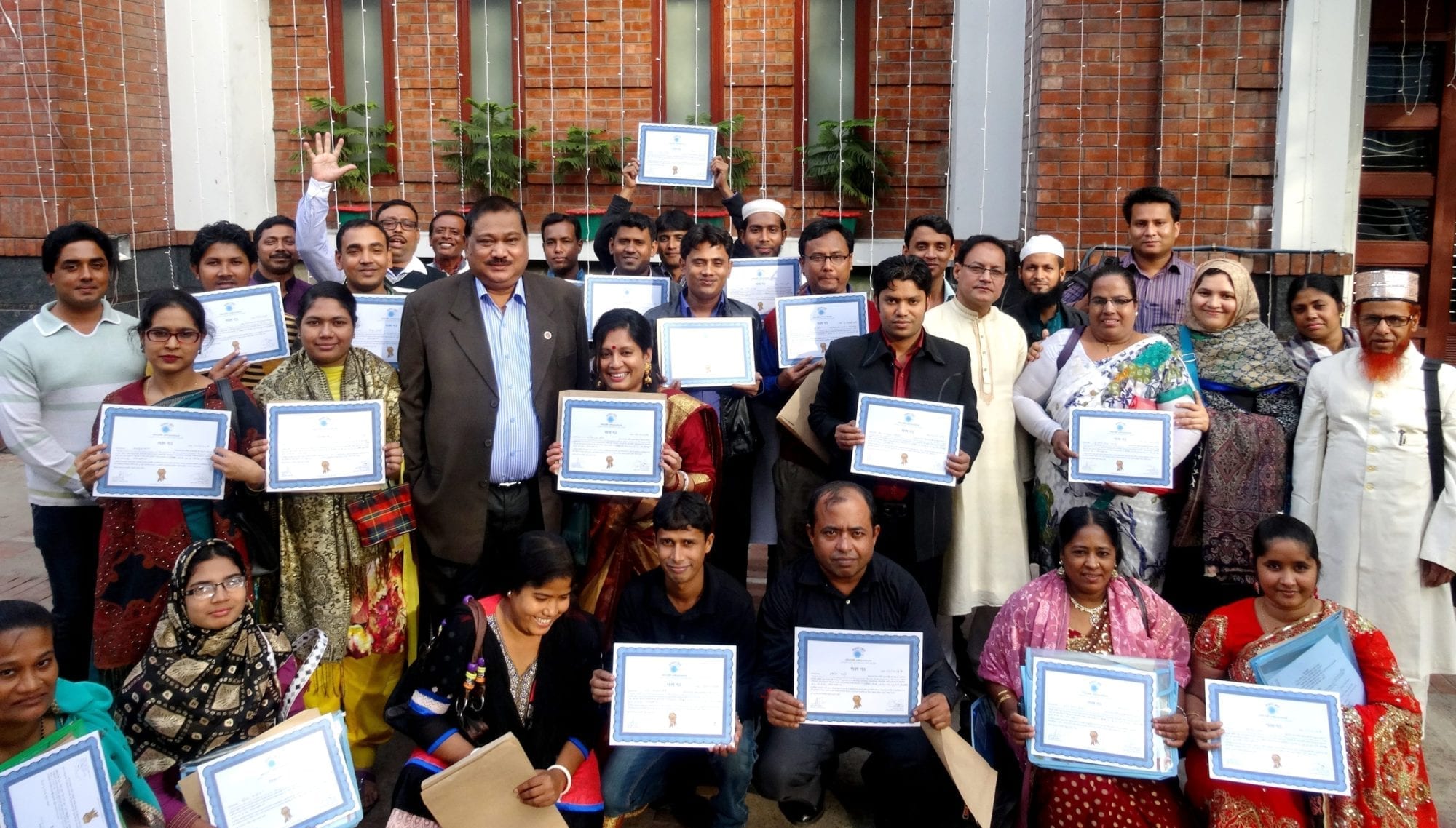
Credit: Solidarity Center
By working through their unions, garment workers can seek safe and healthy workplaces without fear of employer retaliation.
Yet fewer than 3 percent of 5,000 garment factories in Bangladesh have a union.
According to the International Labor Organization, 80 percent of Bangladeshi garment factories need to address fire and electrical safety standards.
Despite promises to improve conditions for garment workers following the Rana Plaza collapse, inspections show that by April 2016, half of all factories that pledged to reform have failed to implement sufficient fire safety measures.
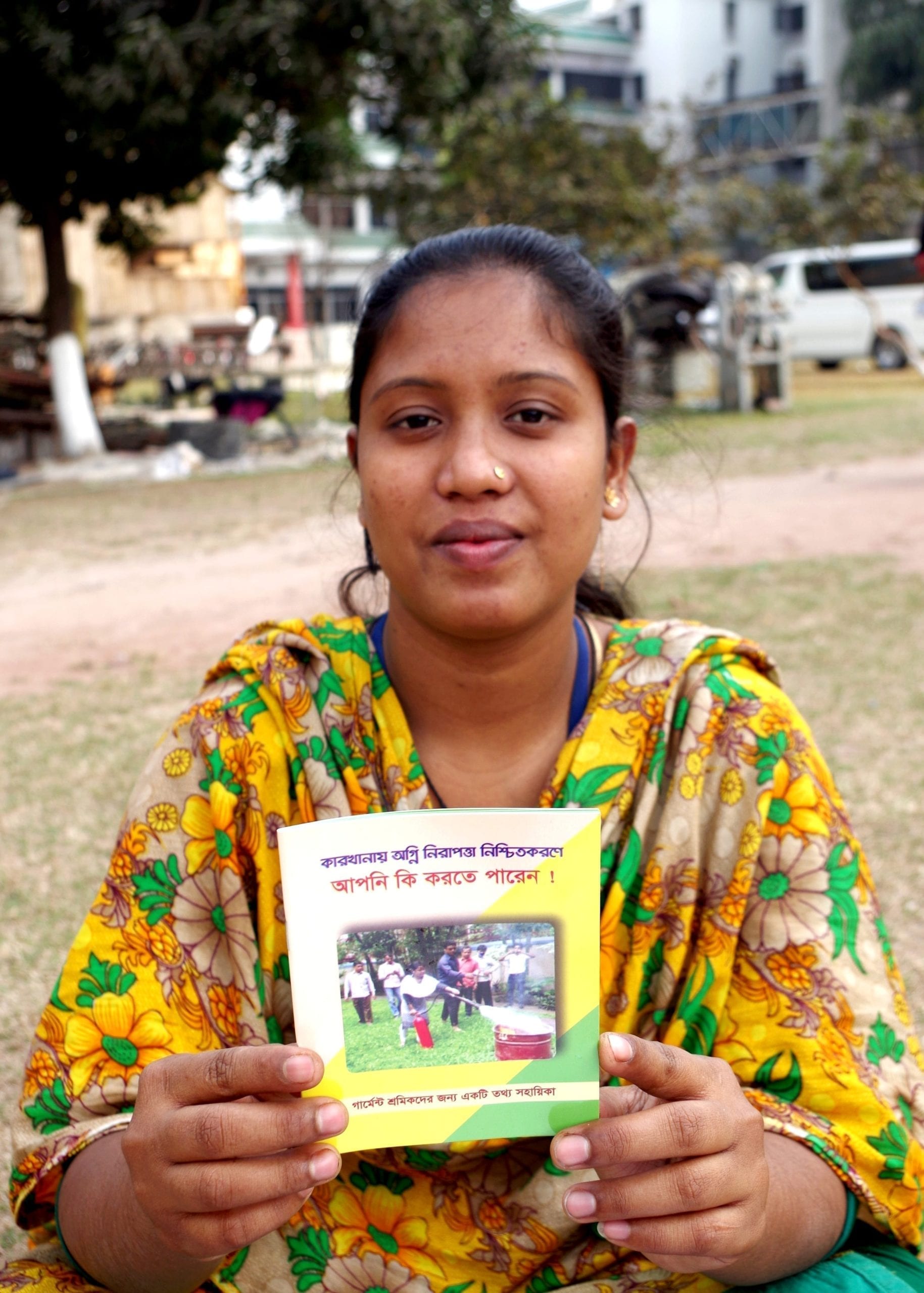
Credit: Solidarity Center
To learn more about how Bangladesh garment workers are organizing for their right to safety, visit www.solidaritycenter.org .
















